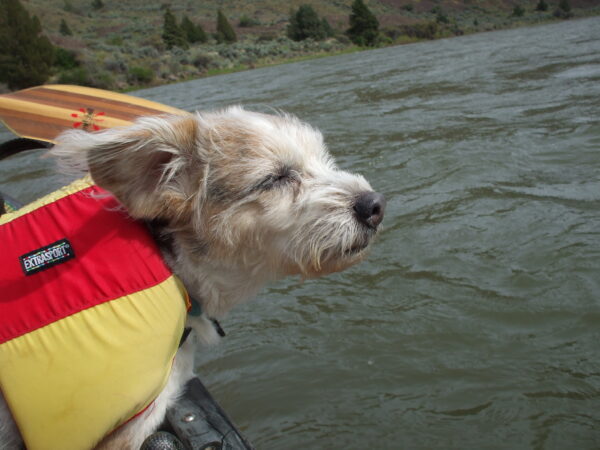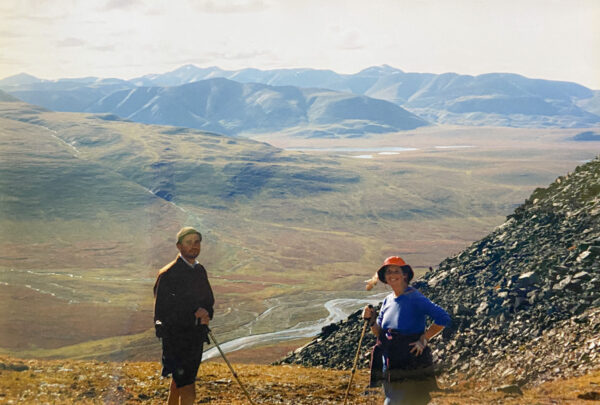On a frigid day in March, Kathryn “Kaki” Burruss, 77, and her husband, Billy, 80, snuggled inside their tent and reminisced about their more than half a century’s worth of adventures canoeing all over the United States. The couple was on a reunion camping and hiking trip with Kaki’s three sisters, Jackie Cole, Marvine Cole, and Ginger Turner—all of whom have canoe camped.
The couple reflected on some of their best memories spent in a canoe and on shorelines. “We’ve probably accomplished 5,000 miles of canoeing, sometimes also camping,” said Kaki. Billy remembered celebrating his 50th birthday on the Hudson Bay.
Canoe camping is, in essence, packing tent and sundry supplies in a canoe, establishing a route (with parked vehicle or scheduled shuttle near destination), and stopping along shorelines to set up camp and spend nights.
The Burrusses, who currently reside in the small community of Deadwood, Oregon, started canoeing when they were kids. “My sisters and I did some canoeing with the Girl Scouts, and Billy canoed and camped a little, so we had some basics,” said Kaki.
 Kaki and Billy Burruss paddle with their oldest granddaughter, Opal. (Courtesy of Kaki Burruss)
Kaki and Billy Burruss paddle with their oldest granddaughter, Opal. (Courtesy of Kaki Burruss)But some friends motivated the couple in the late 1960s to learn the proper skills associated with canoeing. Twenty years later, they combined canoeing with wilderness camping. Because there have been so many excursions, they cannot recall all their trips during their 53-year marriage, but a few memorable ones have included the John Day River in eastern Oregon, the Boundary Waters in Minnesota, the Rio Grande in Texas, and the Buffalo River in Arkansas.
Planning Ahead
Laura Evans, from Chapel Hill, North Carolina, is a certified canoe instructor and educator through the American Canoe Association. She has taught individuals privately and through the Nantahala Outdoor Center (NOC), based in Bryson City, which is in the western North Carolina mountains.
“Canoeing (and camping) is a fabulous entry to all kinds of wilderness areas you might not be able to get to otherwise,” she said. “And once you get into it, it’s difficult not to want to spend all your time planning for your next trip, … all your time on water.”
However, imperative is having the “right” canoe and becoming trained in how to maneuver a canoe on all types of water. She has navigated various canoe styles, primarily whitewater solo and tandem (for two people) as well as flatwater solo and tandem.
While canoes were historically made only of wood, and many still are, other modern materials include aluminum, molded plastic, fiberglass, or synthetic fiber composites. Choosing a canoe often depends on weight; some canoes made of man-made materials are often lighter.
“Some plastic boats tend to be heavy, but plastic is the safest for people to start with who don’t have a lot of experience,” said Evans.
 (Courtesy of Kaki Burruss)
(Courtesy of Kaki Burruss)Both the Burrusses and Evans called attention to the Old Town Tripper model as ideal for canoe camping; the durable canoe has a high-volume hull to hold supplies, and it can be maneuvered capably even with a heavy load.
“But there are a number of companies that make really great ‘tripping’ boats,” said Evans, adding, “I am a competent whitewater canoeist (solo and tandem). But, if I had my way, I would always pick tandem canoeing. While paddling solo, I have more freedom to go where I want on a river. Yet I much prefer tandem paddling. The teamwork required to maneuver the canoe and put it where you want/need to is quite the challenge. When it is done well, tandem canoeing is incredibly powerful. It is also beautiful to see and feels fantastic. Plus, it is a shared experience.”
The Burrusses have owned all sorts of canoes, but they currently maintain six. “The one we’ve used most is an Old Town Tripper, 17-foot, flat bottom,” said Billy.
Old Town, a Maine-based canoe maker since 1898, provides on its website “The Complete Guide To Canoe Camping,” which offers a few handy checklists.
Before ever embarking on a serious canoeing trip, the Burrusses took white water canoeing lessons. “We paddled every weekend for a few seasons,” said Kaki. And when it came time to combine canoeing with camping, she said, “We read ‘North American Canoe Country: The Classic Guide to Canoe Technique,’ by Calvin Rutstrum. It’s the bible for canoe camping.”
“You just want to try to be prepared for anything,” said Billy. “You’re out in the wilderness. You ask yourself, ‘what if I turn over in that rapid?’ In fact, there’s a huge amount to know. I think that taking classes and taking lots of short trips on easy rivers and embarking on it gradually is important. You can learn some from a book, but there is nothing like experience to feel confident. You want your skills and your preparedness to be better than the river you’re doing it on. Rivers change. Rain brings the water up. You need to be able to judge the river.”
 Hiking above an Alaska river. (Courtesy of Kaki Burruss)
Hiking above an Alaska river. (Courtesy of Kaki Burruss)Evans stressed preparedness by sharing one situation that could have ended badly. “A couple joined us on the San Juan River who hadn’t paddled together in 25 years. They did not have the white water skills they needed. On the most difficult rapid, as they peeled out to start running the rapid, they ended up on a rock and tore a giant hole in their canoe. The husband fell out of the canoe, and everything in their canoe was gone, including their car keys. They lost sleeping bags, [their] tent, clothes, … they had nothing for the next three days of our trip. And it took a while to get the wife off a rock. Miraculously, they weren’t badly injured. People don’t know what they don’t know. We tried to warn them, and it didn’t have a good ending. Participants need to be screened—to have the knowledge and skills to do canoe camping safely and enjoyably.”
And then when it comes to taking children on a canoe camping trip, Billy Burruss noted, “Children have less ability to self-rescue. So you want to make sure that your skills are able to protect them and yourself.”
He added, “The rule of thumb with kids: Choose simpler and easier than what you think they can do. You can’t rely on a child to pull his or her own weight with paddling, unless they’ve been trained. Depending on their age and experience level, it’s a lot to expect a child to paddle 5–6 hours a day. You want it to be a fun experience for them. They should participate. They should have a paddle. And they should have jobs when it comes to setting up camp.”
 ( Lee Vue/ Unsplash)
( Lee Vue/ Unsplash)A Lifetime Activity
Mostly, the Burrusses have canoe camped as a couple. However, they have also involved children, grandchildren, other family members, and friends. And the couple is so serious about the activity that they—along with other family members, such as Kaki’s sisters—have participated in the Texas Water Safari, billed as a 260-mile trek from the headwaters of the San Marcos River to the shrimping village of Seadrift on the Texas coastline.
“When you’re on the river, it’s just you and the river,” offered Billy. “A purity of life. I feel at home, joyful. And then to camp out in nature as well,” he mused.
“The most wonderful part of canoe camping is experiencing the wilderness … away from all the electronics and intricacies of daily life. Observe birds and animals in the wild and beautiful wildflowers and trees. There is always great scenery and beautiful environments, and you get a charge out of being able to maneuver the river. It’s a wonderful way to spend time and money,” Evans shared.
 RSS Feed
RSS Feed















 August 29th, 2022
August 29th, 2022  Awake Goy
Awake Goy  Posted in
Posted in  Tags:
Tags: 













